by ajblake
on May 11, 2014
{ }
Slender Crab Spider – ♀
Tibellus sp., Philodromidae
Simon Fraser University, Burnaby, British Columbia, Canada
Nikon D5100, 105 mm f/2.8
May 8, 2014
This week’s photo is another arachnid from the annex. The slender crab spiders are smallish (4-15 mm) non-web building spiders who, unlike the sedentary true crab spiders (Thomisidae), actively pursue their prey. Mouse over the above image to see the underside of the spider, showing the epigyne, which is an important structure for the identification of female spiders. I took this shot using a sandwich bag to expose the underside. A great tip that I learned from BugGuide
by ajblake
on March 30, 2014
{ }
Carabid Beetle
Bembidion tetracolum, Carabidae
Simon Fraser University, Burnaby, British Columbia, Canada
Nikon D5100, 105 mm f/2.8
March 21, 2014
This week’s photo is of the speedy little (7-8 mm) beetle, Bembidion tetracolum, I captured in the annex. I was able to use Alex Wild’s time out trick to get him to hold still long enough a few photos. The genus Bembidion is huge with over 1200 species worldwide with this diversity concentrated in temperate parts of the globe. Thanks to v belov and D.R. Maddison at BugGuide for the timely ID.
by ajblake
on March 17, 2014
{ }
Snow Sedge
Psychoglypha sp., Limnephilidae
Simon Fraser University, Burnaby, British Columbia, Canada
Nikon D5100, 105 mm f/2.8
February 16, 2014
This hapless caddisfly blundered into my cage lighting down in the annex before I captured and photographed her (the 5 segmented maxillary palps makes this Limnephilid a female). I’m still waiting on confirmation of the genus on BugGuide but this caddisfly certainly seems consistent with Psychoglypha. I have a few more shots on BugGuide if anyone can help with an identification.
With this caddisfly I have observed 8 different insect orders down in the science research annex. It’s surprising what you can see when you spend enough time observing in one place, even if that place is a series of tiny windowless rooms. You can see some photos of the other orders here.
by ajblake
on February 8, 2014
{ }
Cabbage Root Fly – ♀
Delia radicum, Anthomyiidae
Simon Fraser University, Burnaby, British Columbia, Canada
Nikon D5100, 105 mm f/2.8
February 8, 2014
I took some time between bioassays to take some photos of another of my study organisms the Cabbage Root Fly. This fly is an important pest of cultivated brassicaceous crops in both Europe and North America. Females oviposit around the base of the plant and the larva develop in the soil feeding on the roots causing significant damage to their host. The vision of the Cabbage Root Maggot has been studied by the likes of S. Finch and R. J. Prokopy leading to a good understanding of how visual cues affect their host plant selection.
by ajblake
on January 12, 2014
{ }
Common House Spider – ♀
Parasteatoda tepidariorum, Theridiidae
Simon Fraser University, Burnaby, British Columbia, Canada
Nikon D5100, 105 mm f/2.8
January 10, 2014
This week we return to the annex with another of its resident arachnids. I’m still hoping for an ID on this spider from BugGuide or maybe Catherine will help me out. This particular individual has been living behind one of my bug dorms feasting on Colorado Potato Beetles, Root Maggot Flies and Fungus Gnats.
by ajblake
on December 2, 2013
{ }
Female Long-bodied Cellar Spider
Pholcus phalangioides, Pholcidae
Simon Fraser University, Burnaby, British Columbia, Canada
Nikon D5100, 105 mm f/2.8
November 27, 2013
In between colony maintenance and prepping my proposal for my first committee meeting I snuck a quick half hour in the annex to photograph the resident cellar siders. It seems every out of the way corner of my space in the annex has at least one of these spiders. I keep these spiders well nourished with the escaped insects from my cages and greenhouse plants. You should also check out these pictures of an expectant cellar sider and her babies over at Sean’s blog.
by ajblake
on October 6, 2013
{ }
Morning-glory Plume Moth
Emmelina monodactyla, Pterophoridae
Simon Fraser University, Burnaby, British Columbia, Canada
Nikon D5100, 105 mm f/2.8
October 4, 2013
Given the recent rainy weather, I had been planning to raid the archives for this weeks photo, but I was saved on Friday when my photo of the week fluttered almost literally into my lap. I was working in the greenhouse when I spotted this beautiful plume moth flutter by and land on one of the greenhouse lights. It was kind enough to stay put long enough for me to walk back to the annex to grab a vial to collect it. The larva of this moth feed on members of the Convolvulaceae like Hedge Bindweed, which I have seen growing just south of the greenhouses. I have a few more shots of the moth up on Flickr.
by ajblake
on October 1, 2013
{ }

Colorado Potato Beetle
Leptinotarsa decemlineata, Chrysomelidae
Simon Fraser University, Burnaby, British Columbia, Canada
Nikon D5100, 105 mm f/2.8
August 30, 2013
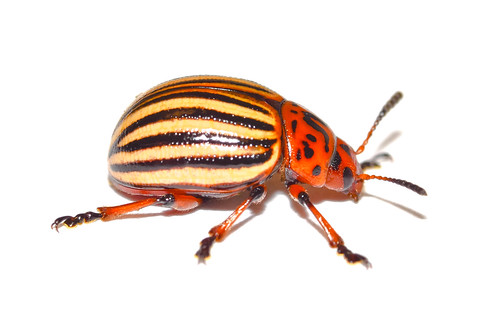
Colorado Potato Beetle
Leptinotarsa decemlineata, Chrysomelidae
Simon Fraser University, Burnaby, British Columbia, Canada
Nikon D5100, 105 mm f/2.8
August 30, 2013

Mating Colorado Potato Beetles
Leptinotarsa decemlineata, Chrysomelidae
Simon Fraser University, Burnaby, British Columbia, Canada
Nikon D5100, 105 mm f/2.8
August 31, 2013

Colorado Potato Beetle
Leptinotarsa decemlineata, Chrysomelidae
Simon Fraser University, Burnaby, British Columbia, Canada
Nikon D5100, 105 mm f/2.8
August 31, 2013
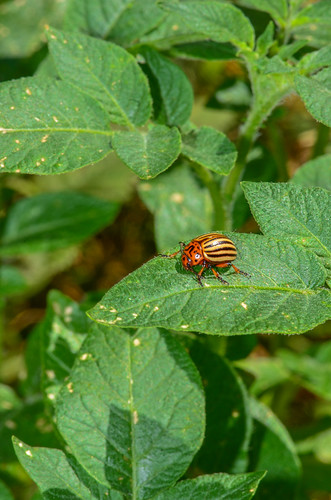
Colorado Potato Beetle on a Potato Plant
Leptinotarsa decemlineata, Chrysomelidae
& Solanum tuberosum, Solanaceae
Simon Fraser University, Burnaby, British Columbia, Canada
Nikon D5100, 105 mm f/2.8
August 31, 2013
A couple weeks ago I took some time between bioassays to take some photos of one of my study organisms. The Colorado Potato Beetle is an important pest of potato crops worldwide. Both the adult and larva of the beetle feed on potato leaves. Unlike many agricultural pests the potato beetle is native to North America, although it is invasive in Europe and Asia. The beetle was originally associated with Buffalo-bur but expanded its host range to include potato crops in the 1840s. The leaf feeding habits, the economic importance, and relatively well described vision all make the Colorado Potato Beetle a good candidate for my research with polarized light.
by ajblake
on September 8, 2013
{ }
Consperse Stink Bug
Euschistus conspersus, Pentatomidae
Simon Fraser University, Burnaby, British Columbia, Canada
Nikon D5100, 105 mm f/2.8
August 30, 2013
This week yet another arthropod from the research annex. I found this Consperse Stink Bug just outside the annex as I was waiting for one of my bioassays to finish. This insect is native to North America but like many pentatomids can build up on wild hosts before invading orchards late in the season. Mouse over the photo to show a top view of the stinkbug.
by ajblake
on August 18, 2013
{ }
Common Earwig
Forficula auricularia, Forficulidae
Simon Fraser University, Burnaby, British Columbia, Canada
Nikon D5100, 105 mm f/2.8
August 16, 2013
This week’s photo is an addendum to my Arachnids of the Annex post. I found this Common Earwig prowling around my colonies down in the Annex. The Common Earwig is the most common of the four introduced species that occur in BC. The straight forceps (or cerci) indicate that this is a female Earwig. I was pretty excited with this find as this is my second new insect order (Dermaptera) since moving to BC.

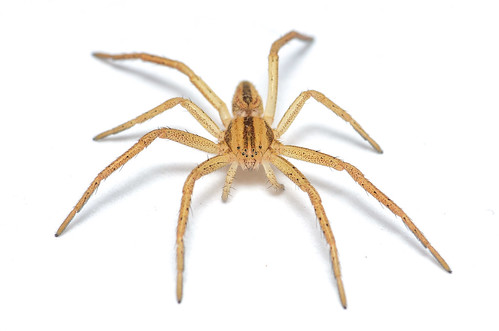
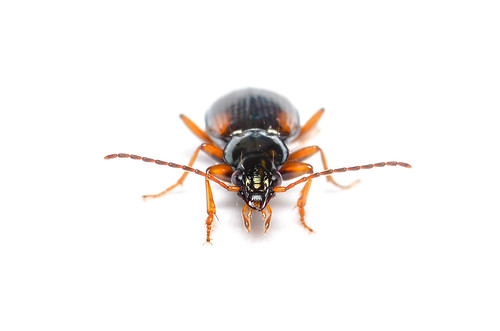
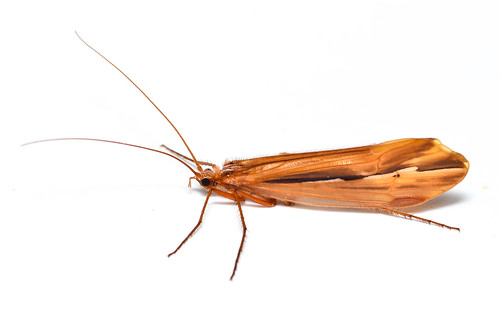
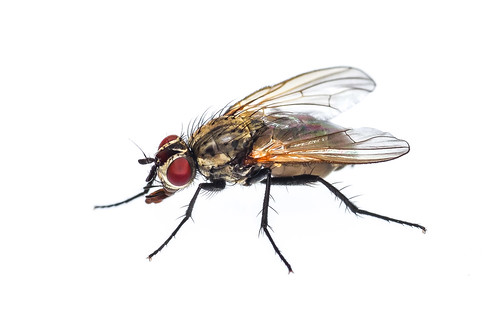
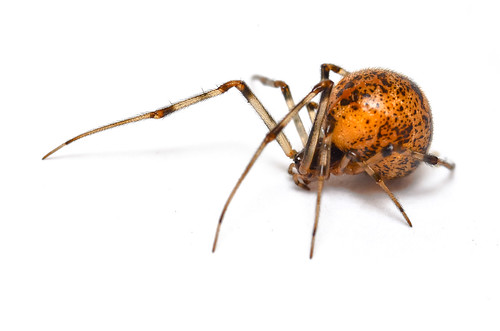
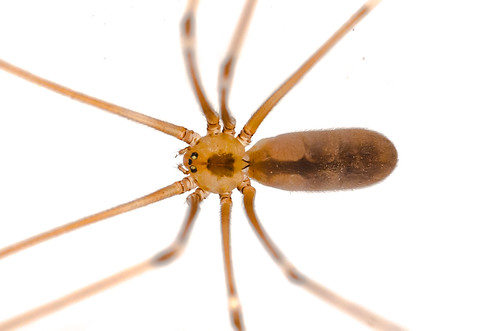
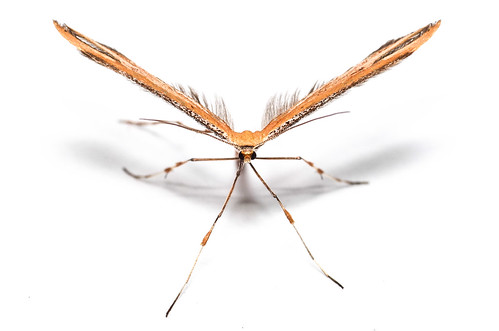





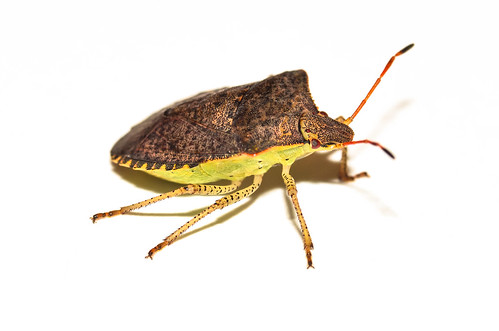
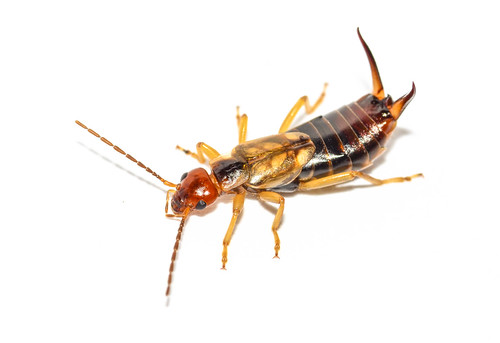
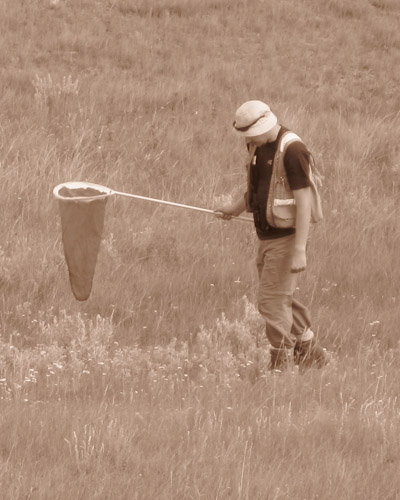
Follow Me